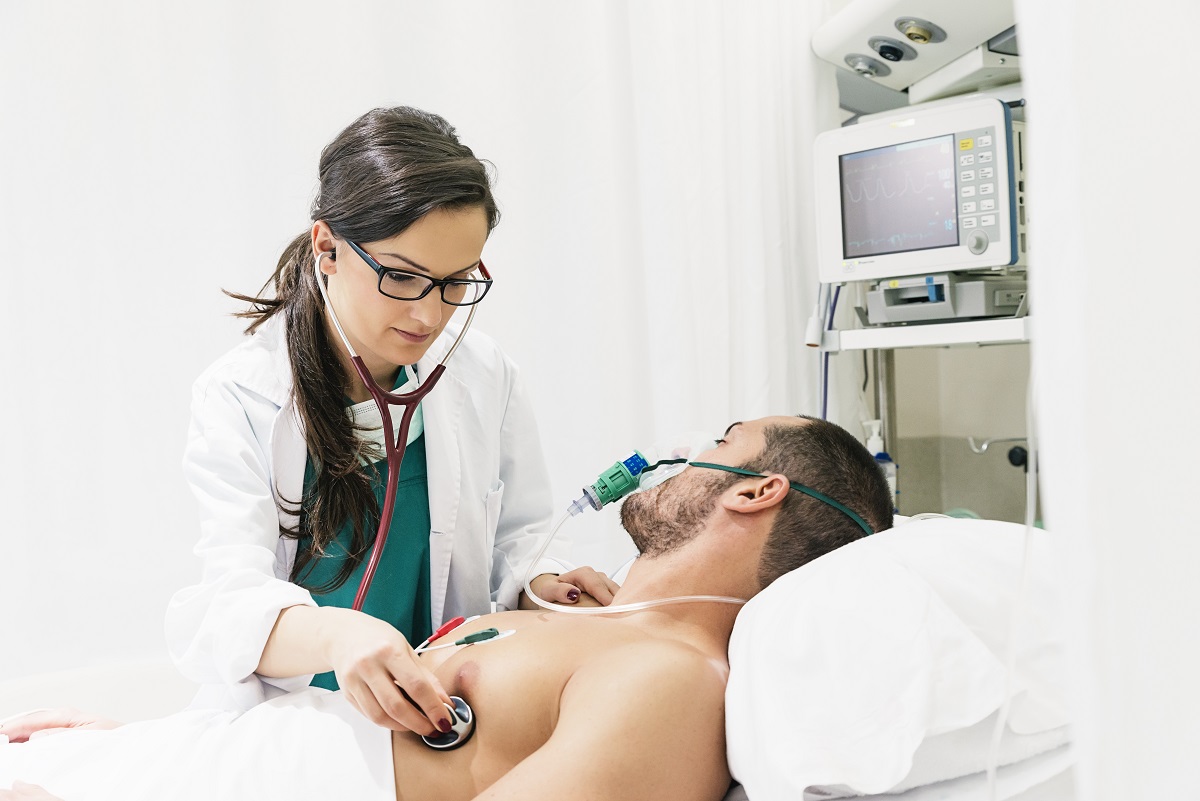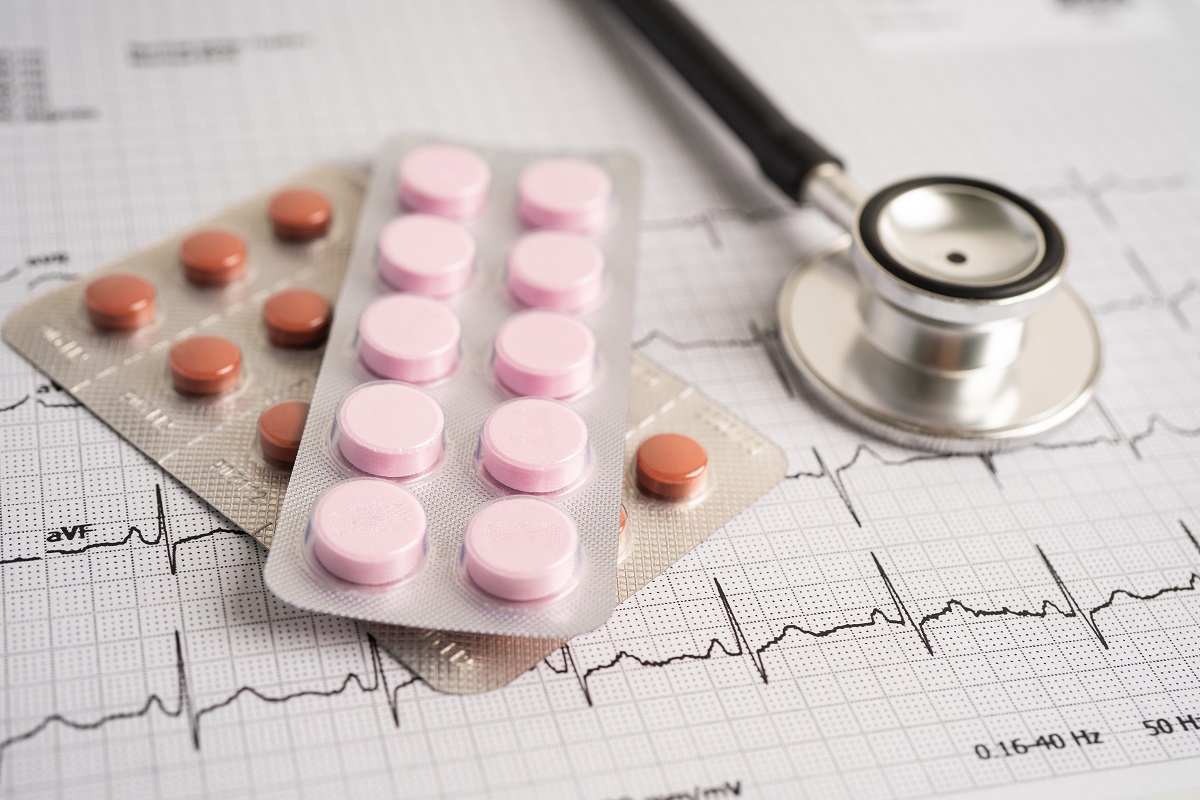A condition when the heart rate reaches over 100 beats per minute is called tachycardia. Roughly all irregular heart rhythm types (known as arrhythmias) provoke tachycardia. However, a fast heart rate does not always mean something goes wrong, it can increase due to stress or during exercise.
Usually, when people experience tachycardia they do not have any symptoms or complications. In some cases, this condition needs medical attention because it can lead to serious health issues if is not treated. These include heart failure, stroke, or sudden cardiac death.
Physicians usually, prescribe medicines or surgery to treat tachycardia. Sometimes, specific actions or movements are also involved in the tachycardia treatment.
Tachycardia Types
Different tachycardia types can occur. For instance, sinus tachycardia usually happens due to exercise or stress. However, other types are categorized by cause and part of the heart that provokes it. Check below some common tachycardia types provoked by arrhythmias:
- Atrial fibrillation (AFib) – This is one of the most common tachycardia types. A fast heart rate is caused by irregular electrical signals that begin in the upper heart’s chambers (known as atria). This tachycardia type usually does not go away without treatment.
- Atrial flutter – This type is similar to AFib but heartbeats are organized. In such cases, tachycardia can go away on its own.
- Ventricular tachycardia – This type begins in the lower chambers of the heart known as ventricles. Therefore, a fast heart rate does not allow the ventricles to fill and squeeze to pump blood to the body. If this effect lasts several seconds you will not receive any damage. But if these episodes last more than a few seconds it can be life-threatening.
- Supraventricular tachycardia (SVT) – SVT is a medical term that means irregular heart rhythms begin above lower heart chambers, which usually start and stop abruptly.
- Ventricular fibrillation – This is a serious disease that can be deadly because the heart rhythm is not reset for several minutes. Irregular and fast electrical signals provoke the lower chambers of the heart to shiver instead of coordinated squeezing.
Symptoms
While some people do not experience any symptoms, there are people who can experience any of the following symptoms. Examples include:
- Rapid pulse
- Breathing problems
- Fainting
- Chest pain
- Lightheadedness
- Fast or pounding heartbeat (palpitations)
When Should I Visit my Healthcare Professional?
It is advised to get medical help right away if you experience any of the following symptoms. These include:
- Trouble breathing
- Chest discomfort or pain
- Weakness
- Dizziness
- Near fainting
Moreover, ventricular fibrillation is considered a medical emergency and requires medical help immediately. When a person experiences this type of tachycardia the blood pressure drops significantly. As a result, that person experiences breathing and pulse stops because the heart no longer pumps blood to the body. In other words, cardiac arrest occurs. In case this occurs with someone near you, it is advised to do the following:
- You should immediately call 911 or any emergency number in your area.
- Start CPR because it will help to maintain blood flow to the organs until the treatment begins.
- An automated external defibrillator (AED) also could help.
Causes
In case your heart rate increases due to exercise or stress it is called sinus tachycardia and it is a symptom, not a condition.
However, different heart conditions (such as arrhythmia) can provoke tachycardia. Check below the most common tachycardia causes:
- Hypertension (high blood pressure)
- Hypotension (low blood pressure)
- Fever
- An increased amount of caffeine
- Alcohol withdrawal
- Misuse of alcohol
- Specific medicines
- Overactive thyroid (known as hyperthyroidism)
- Smoking or nicotine use
- Reduced red blood cells (anemia)
- Electrolyte changes (including potassium, sodium, calcium, and magnesium)
- Illegal drugs (such as methamphetamine)
- Myocardial infarctions
In some cases, healthcare professionals cannot determine the exact tachycardia cause.
How Does The Heart Beat?
Knowing how the heart works can help us understand why tachycardia occurs. The heart has 4 chambers including two upper chambers (atria) and two lower chambers (ventricles). In normal circumstances, in the upper chamber of the heart, a group of cells (known as sinus nodes) produce signals that start each heartbeat. Thereafter, these signals move across the upper chambers of the heart, then they arrive at certain cells (known as AV nodes). This is the location where the signals slow down and go to the lower chambers of the heart.
Commonly, if you do not have heart problems, the resting heart rate is usually between 60-100 beats per minute. Tachycardia provokes the heart beat more than 100 beats per minute.
Risk Factors
Generally, the common cause of tachycardia is irregular heart rhythms (arrhythmias). Examples include:
- Becoming older
- Family history of heart disorders
- Hypertension (high blood pressure)
Mostly, lifestyle changes and treatment can reduce your risk of developing tachycardia.
What Are The Possible Complications of Tachycardia?
The heart does not pump enough blood to the body when the heart beats too fast. Therefore, the organs and tissues do not receive enough oxygen. The complications usually depend on the tachycardia type, how fast the heart beats, how long it lasts, other existing heart conditions, and others. Check below some potential tachycardia complications:
- Heart failure
- Sudden cardiac death (mostly occurs due to ventricular tachycardia or fibrillation)
- Frequent unconsciousness or fainting
- Blood clots usually lead to stroke or myocardial infarctions if not treated. Physicians usually prescribe blood thinners (also known as anticoagulants) to reduce the risk of blood clots
Diagnosis
In most cases, doctors ask you questions about symptoms and family history and perform a physical examination to diagnose tachycardia. They can also order you to do some tests to check for the exact cause and confirm an unusually fast heartbeat. Check below some of them:
- Electrocardiogram (ECG or EKG) – This is a quick test that verifies the heartbeat.
- Holter monitor – This is a portable device that helps to record the heart’s activity during the day. It usually detects irregular heartbeats that cannot be identified during EKG examination.
- Event monitor – This is a device similar to the Holter monitor but it records only a few minutes daily. Thus, you should activate it by pushing a button when you experience tachycardia symptoms.
- Echocardiogram – This test involves sound waves that help to get images of your beating heart and blood flow through the heart.
- Chest X-ray – This test shows whether you have lung or heart conditions or not.
- MRI scans – Also known as cardiac MRI, it is used to get detailed images of the heart.
- CT scans – This test also called cardiac CT also helps to get a closer look at the heart.
- Coronary angiogram – This test helps doctors to determine if you have a blocked or narrowed blood vessel in the heart.
- Electrophysiological (EP) study – Commonly, this study helps to confirm tachycardia. It also can determine where the incorrect electrical signals occur.
- Stress tests – During this test, doctors may order you some exercises to see how they affect your heart. Some exercise can provoke worsening of the tachycardia. These exercises include walking, pedaling on a stationary bike, and others.
- Tilt table test – This test can be done only if you experience fainting. Physicians usually check your heart rate and rhythm, blood pressure while you are lying on a flat table. Thereafter, doctors will tilt the table in a vertical position.
Treatment
There are different treatment options to treat tachycardia. These options help to reduce fast heartbeat and prevent future episodes. In some cases, doctors will prescribe medications if you experience tachycardia due to an underlying condition. Check below some options that will help to reduce fast heart rate:
- Vagal maneuvers – The following actions help to affect the vagus nerve that controls the heartbeat. These include coughing, bearing down, passing stool, or putting a pack of ice on the face during an episode of fast heartbeat.
- Medications – In case the previous method does not help, your physician may prescribe you some drugs to correct the heart rhythm.
- Cardioversion – This option is used to shock electrically the heart, which helps to reset the heart rhythm. Usually, it is used rarely such as when emergency care is or when medicines or vagal maneuvers do not work.
Check below some treatment options used to prevent tachycardia:
- Medicines
- Catheter ablation
- Pacemaker
- Implantable cardioverter-defibrillator (ICD)
- Maze procedure
- Surgery
Frequently Asked Questions
Is there a way to prevent tachycardia?
Maintaining your heart healthy is the best way to prevent tachycardia. Check below some tips that could help:
- Quit smoking
- Reduce salt and saturated fat in your diet
- Aim for at least 30 minutes of exercise daily
- Try to get and keep a healthy weight
- Decrease and manage stress
- Keep under control your blood pressure, cholesterol, and blood sugar levels
- Get enough sleep
Can ventricular tachycardia be cured?
Commonly, it depends on the underlying cause but some people cure the abnormal heart rhythm with radiofrequency catheter ablation. However, discuss with your doctor for more details.
What are the most commonly prescribed medications for tachycardia?
Physicians usually prescribe the following drugs to treat tachycardia. Examples include:
- Verapamil
- Metoprolol
- Atenolol
- Diltiazem
- Digoxin
If you have other questions, ask your healthcare professional.




